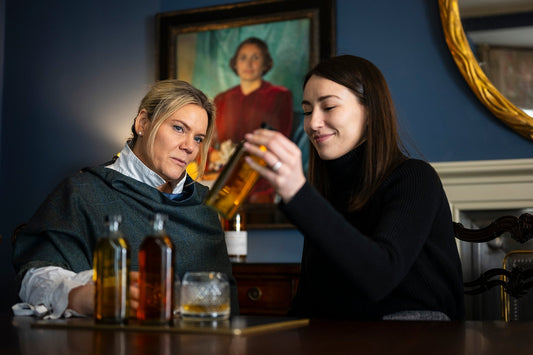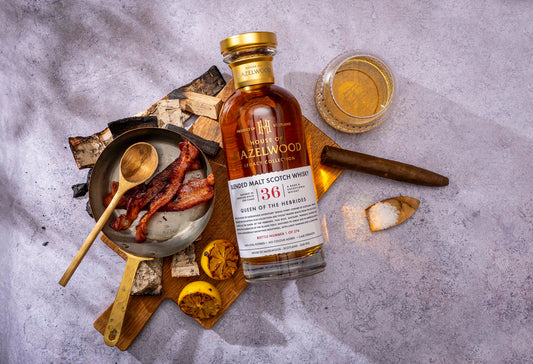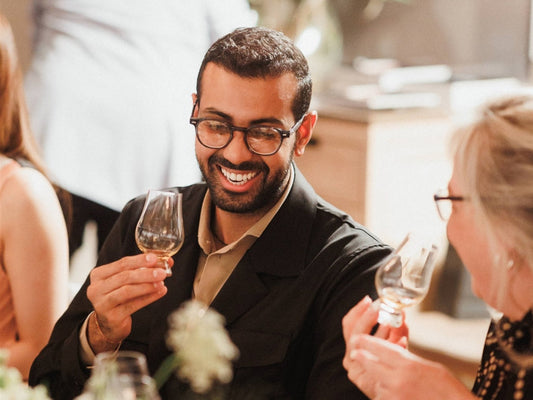The relationship between Sherry and Scotch Whisky runs deep, with the properties of fortified wine and spirit coming together to create harmony in the form of Sherry Cask Whisky. But what makes this synonymous pairing so well matched?
Juicy and positively bursting with tart, red berried ripeness – you’ll find no shortage of whisky aficionados waxing lyrical about the merits of a heavily sherried Scotch whisky. Adored for its sumptuous sweetness, sherry cask whisky is often the winning force in welcoming new drinkers into the fold – and with a sliding scale of the slightly spiced to the not-so-subtle titled “sherry bombs”, the sherry cask finish is as almost as diverse as the Scotch Whisky category.
Thanks to the properties of sherry casks and their ability to impart essential esters, tannins and flavours onto new make spirit, the whisky industry has long enjoyed a lasting partnership with the bodegas of the Andalucian region of Jerez, Spain - the protected destination of origin charged with the craft of this fortified wine.
What is Sherry? - A Brief Explanation
Like Scotch Whisky, Sherry production is subject to regional laws that protect its characteristics – for instance, it must also be matured in cask for a minimum of three years before it can be bottled and sold as Sherry.
Sherries will typically be made from a single white grape variety – the most common being the Palomino grape, although in whisky maturation, it is not uncommon to come across sherry cask finishes which have previously housed sherry made by Pedro Ximenez (sometimes called PX) or Muscatel grapes.
Once grapes have been crushed and fermented as with standard process of winemaking, the base will then be fortified with added alcohol to raise the strength of the wine. The wine is then placed into oak casks - typically a “sherry butt” size of 500 litres - to mature. Unlike Scotch, where whisky may lay in a single cask for years at a time, Sherry production employs the use of a Solera system, where casks are stacked upon each other, with the oldest wines left at floor level, and younger wines stacked on top. Wines from floor level are taken first, and the casks move downward, ensuring a democratic spread of aged wines, maintaining a consistent signature style.
Sherry can develop character through oxidisation in cask – where prolonged air contact prompts the formation of flavours, but in most cases, the winemaker will opt for a biological maturation using a layer of yeast known as flor to create a nutty, savoury styled flavour.
Like whisky, Sherry is produced in a range of styles – each with their own production intricacies. One of the most common is Fino Sherry, which is typically served chilled as an alternative to a dry wine.
Manzanilla Sherry is similar in style, with a significantly more savoury and salted element. In recent years, there has been an increase in whisky producers opting to use Manzanilla casks as a secondary finish for whisky – however, this is not particularly widespread.
Moving down the spectrum, the sweeter, richer offerings of Amontillado and Oloroso Sherries are significantly more common in the use of whisky maturation thanks to their intense presentation, imparting fruitier, meatier properties onto new make spirit.
The Relationship Between Scotland and Spain
With oak being an integral part of maturation for both Scotch and Sherry, it perhaps should come as no surprise that the two industries have been entwined in partnership for centuries. The parallels between the two industries can be striking – and just as Scotch, and in particular, blends, have fallen in and out of favour over the decades, the same can be said of Sherry, of which experienced its last great boom of popularity in the 1960s and 1970s.
As demand for socially consumed Sherry has diminished over the past few decades, and desire increased exponentially for Scotch Whisky, the focus on sherry production has shifted, with some bodegas tapping into the lucrative offering of producing sherry purely to facilitate the creation of sherry casks for use as maturation vessels in Scotch Whisky.
Although many bodegas are funnelling efforts into this type of cask production, this is by no means a new development, with renowned and established sherry houses having worked in partnership with whisky makers, such as our own Gordon Family, built on the strength of business deals, goodwill, and handshakes that all took place decades ago.
The Impact of Sherry Casks on Scotch Whisky Flavour
For many distilleries, the properties which can be imparted from a sherry cask, make these jammy, rich characters the natural bedfellows for new make spirit. Although these casks are used widely across the industry – and the full breadth of whisky styles – including even the most phenolic of island malts - the region most synonymous with sherry cask whisky is that of Speyside.
Sherry butts by their nature, taking on flavour primarily through oxidisation, encase the staves of the casks in sherry over the course of several years. This retained sherry later imparts flavour onto new make spirit in the form of tea-like tannins, dark berried fruits, and spice, making it the perfect partner to temper powerful new make properties – parrying the sometimes-divisive characteristics present in a heavier bodied Speyside spirit – such as sulphur.
The influence of sherry is likely to be more pronounced in younger whiskies, but in the rare occasions where a cask is left to slumber for decades, such a maturation can yield the most unexpected of results.
A Sherry Cask Whisky Selection

The Tops
A 33-Year-Old Blended Malt Sherry Cask Whisky hailing from the region of Speyside, there is no better example to demonstrate the intensely rich character a length maturation can yield than within The Tops from the Legacy Collection. A marriage of the very “tops” – or the best of the best components available from within our inventory, this yield of just 523 toffee-rich bottles is unlikely to last long.
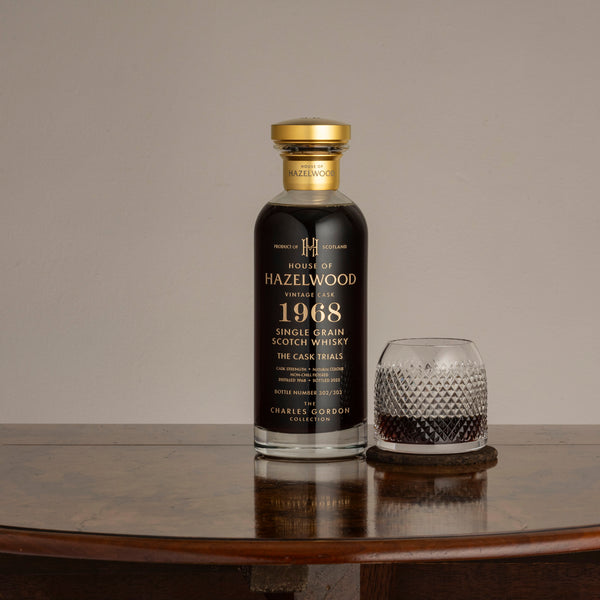
The Cask Trials
Matured for a remarkable 53 years in a single sherry butt, this incredible 1968 vintage Single Grain Scotch Whisky is a demonstration of how a lengthy slumber in a sherry cask can influence the very presentation of a whisky. Extended contact in cask has given way to a resinous whisky, offering up notes of dried fruit, espresso, and toffee – but perhaps the most perplexing – and yet delightful of all – is the transformation of character, in a malt-styled spirit, which if tasting blind, could be considered unrecognisable as a grain whisky.
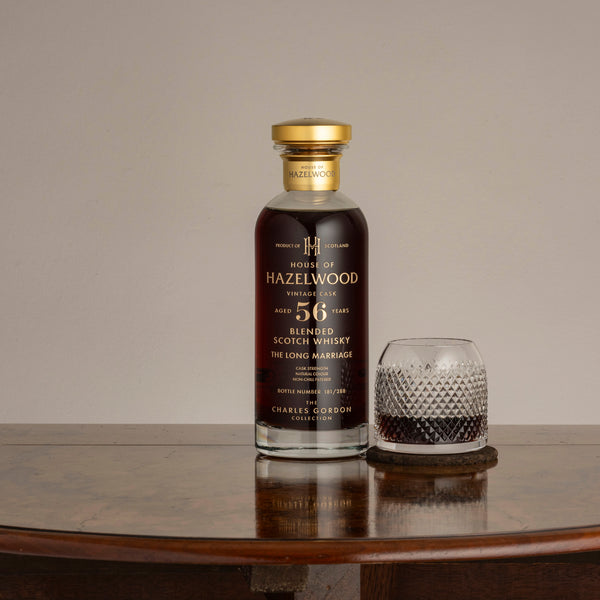
The Long Marriage
A 56-Year-Old Blended Scotch Whisky which has lain in wait for over half a decade in a single refill sherry butt is a rarity. This outstanding example is a tribute to the relationship between sherry and Scotch, aptly named “The Long Marriage”, represented in an evocative expression of decadent and mouthcoating cinnamon, underpinned by aged rancio characteristics only achievable under such a long dedication of patience.
Every sherry cask whisky within the House of Hazelwood inventory has its own unique story to tell. Allow them to regale their tempting tales – shop the range now.


